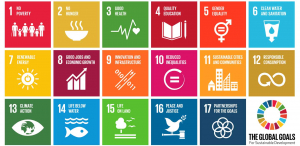Indicators in this domain assess the extent to which migrants have the same status as citizens in terms of access to basic social services such as health, education, and social security. It also describes the rights of migrants to family reunification, to work, and to residency and citizenship. The ratification of the main international conventions is also included within this domain.
Indicators in this category look at the extent to which migrants have access to certain social services such as health, education and social security. They also examine measures to ensure integration and access to work.
Indicators in this domain assess countries’ institutional, legal, and regulatory frameworks related to migration policies. Domain 2 also reviews the existence of national migration strategies that are in-line with development, as well as institutional transparency and coherence in relation to migration management. This domain also investigates the extent to which governments collect and use migration data.
Indicators in this category assess the institutional frameworks of cities for migration. This area also examines the existence of migration strategies consistent with development objectives, as well as institutional transparency and coherence in migration management.
This domain focuses on countries’ efforts to cooperate on migration-related issues with other states and with relevant non-governmental actors, including civil society organizations and the private sector. Cooperation can lead to improvements in governance by aligning and raising standards, increasing dialogue and providing structures to overcome challenges.
Indicators in this category focus on cities’ efforts to cooperate on migration issues with the national government as well as other cities and relevant non-governmental actors, including civil society organizations and the private sector.
This domain includes indicators on countries’ policies for managing the socioeconomic well-being of migrants, through aspects such as the recognition of migrants’ educational and professional qualifications, provisions regulating student migration and the existence of bilateral labour agreements between countries. Indicators equally focus on policies and strategies related to diaspora engagement and migrant remittances.
Indicators in this category assess cities’ initiatives in terms of international student mobility, access to the labour market and decent working conditions for migrant workers. Aspects related to diaspora engagement and migrant remittances are also included in this domain.
This domain studies the type and level of preparedness of countries when they are faced with mobility dimensions of crises, linked to either disasters, the environment and/or conflict. The questions are used to identify the processes in place for nationals and non-nationals both during and after disasters, including whether humanitarian assistance is equally available to migrants as it is to citizens.
Indicators in this category examine the type and level of readiness of cities to deal with aspects of mobility crises. The questions focus on the processes in place for citizens and non-citizens both during and after disasters, especially if humanitarian assistance is available for migrants and citizens.
This domain analyses countries’ approach to migration management in terms of border control and enforcement policies, admission criteria for migrants, preparedness and resilience in the case of significant and unexpected migration flows, as well as the fight against trafficking in human beings and smuggling of migrants. It also assesses efforts and incentives to help integrate returning citizens.
Indicators in this category look at the cities’ approaches to migrant safety as well as return and reintegration policies and the fight against trafficking in persons.
This country profile describes examples of well-developed areas of the Kingdom of Sweden's (hereafter referred to as Sweden) migration governance structures and areas with potential for further development, as evaluated by the six domains of the Migration Governance Indicators (MGI). These address migrants’ rights, a “whole-of-government” approach, partnerships, socioeconomic well-being of migrants, the mobility dimensions of crises, and safe and orderly migration.
Click the icons on the wheel to explore the key findings.
The Migration Governance Indicators (MGI) initiative is a policy-benchmarking programme led by the International Organization for Migration (IOM) and implemented with the support of the Economist Intelligence Unit. Funding is provided by IOM Member States.
Migration Governance: Examples of well-developed areas:
-
All children who live in Sweden have the right to attend school – including children seeking asylum.
-
All persons with a legal right to reside in Sweden and who can be expected to stay for one year or longer have the same rights as Swedish citizens.
-
Non-EU migrants who have a work permit or who are exempt from the requirement for one have equal access to employment (with some exceptions).
-
Social security can be accessed outside of Sweden by migrant workers. Furthermore, pensions are not conditional on Swedish citizenship. Migrants have access to their income pension, supplementary pension and premium pensions irrespective of which country they move to.
Areas with potential for further development:
-
Sweden has not ratified the International Convention on the Protection of the Rights of All Migrant Workers and Members of Their Families (ICRMW), or the ILO Migration for Employment Convention.
Migration Governance: Examples of well-developed areas:
-
The Ministry of Justice houses three dedicated migration divisions responsible for the formulation and tracking of migration policy: the division for Migration Law, the division for Management of Migration Affairs, and the division for Migration and Asylum Policy. The division for Management of Migration Affairs oversees the Swedish Migration Agency, which is primarily tasked with implementing immigration and asylum/refugee policy.
-
National migration legislation in Sweden is outlined by the Swedish Aliens Act (2005:716) and the Aliens Ordinance (2006:97).
-
The Swedish Migration Agency provides information on its website regarding rules and regulations related to migration.
-
The official government statistics agency, Statistics Sweden, provides annual updates on inward and outward migration.
Areas with potential for further development:
-
Currently, beyond general consular services, the Government has no targeted institutions that focus on the emigration of Swedish national or diaspora affairs.
Migration Governance: Examples of well-developed areas:
-
Sweden engages with the private sector in agenda-setting and the implementation of migration-related issues.
-
Sweden is involved with several organizations that aim to promote international cooperation on the subject of migration. These include the Global Forum on Migration and Development, the International Organization for Migration (IOM), the Organization for Economic Co-operation and Development, the Intergovernmental Consultations on Migration, Asylum and Refugees, and the United Nations High Commissioner for Refugees, to name a few.
-
Through the Swedish International Development Cooperation Agency (Sida), the Government supports various civil society organizations in the implementation of migration-related measures.
Migration Governance: Examples of well-developed areas:
-
In 2008, Sweden’s labour immigration rules shifted from being government-led to employer-led. This has facilitated the hiring of foreign workers and allows a much more flexible system that can adapt to meet the labour demands of the Swedish economy.
-
In order to participate in a Swedish educational programme, international students must successfully apply for a residence permit.
-
Ethical recruitment measures are in place for foreign workers in Sweden.
Areas with potential for further development:
-
Although Sweden regularly monitors the labour market to identify needs, this is not directly linked to its migration policy.
Migration Governance: Examples of well-developed areas:
-
The Swedish Civil Contingencies Agency (MSB) coordinates the national and local response to crises. It also operates the dinsäkerhet.se (“your security”) website, which includes checklists of what should be kept in the home in preparation for various crisis scenarios.
-
In the event of emergency there are communication systems available to the population to receive information on the evolving nature of a crisis, allowing them to communicate their needs and providing details on ways to access assistance.
-
The communication systems in Sweden take into consideration the specific needs of migrants, and services such as the MSB website, the Swedish Migration Agency website and Swedish Public Radio deliver information in multiple languages.
-
Sweden has measures in place to make exceptions to the immigration procedures for migrants whose country of origin is experiencing crisis.
Migration Governance: Examples of well-developed areas:
-
The European Schengen Agreement allows for free movement within many European countries; however, the system controls length of stay within European borders for non-Schengen residents. Specifically, Sweden – as a member of Schengen – uses the Schengen Information System (SIS) which supports external border control and law-enforcement cooperation among the Schengen States.
-
The Swedish Migration Agency oversees the length of stay for certain types of visa, such as tourist visas, as people seek to change their status, for instance.
-
The Swedish Migration Agency clearly outlines all visa options available, with its website categorizing visas by the type of migrant, such as student, job-seeker or asylum-seeker.
-
Sweden has a formal, fully online visa application system that enables migrants to be granted a visa before arrival.
-
The Swedish Police Authority is responsible for assigning a National Rapporteur on trafficking in human beings at the national and EU levels.
-
In December 2017 eight authorities were given a government mandate for the period 2018–20 to develop their methods for joint control to counteract violations and crime within the area of work and employment, including human trafficking for labour exploitation.
-
A National Action Plan to prevent prostitution and human trafficking for sexual and other purposes was developed in February 2018.
Areas with potential for further development:
-
Sweden does not currently have any formal government programme or dedicated policy focusing on attracting nationals who have migrated abroad.




